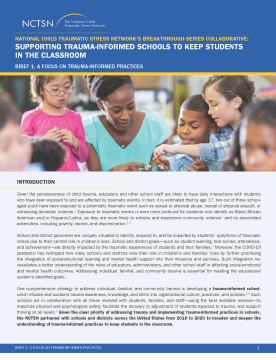
Supporting Trauma-Informed Schools to Keep Students in the Classroom: A Focus on Trauma-Informed...
This brief includes a look at the six essential domains developed and addressed as part of the Collaborative Change Framework...
Research suggests that approximately 25% of American children will experience at least one traumatic event by the age of 16. A child's reactions to trauma can interfere considerably with learning and/or behavior at school. Schools serve as a critical system of support for children who have experienced trauma. Administrators, teachers, and staff can help reduce the effects of trauma on children by recognizing trauma responses, accommodating and responding to traumatized students within the classroom, and referring children to outside professionals when necessary. The National Child Traumatic Stress Network has developed tools and materials to help educators, school staff, and administrators understand and respond to the specific needs of traumatized children. In addition to the NCTSN resources highlighted below, School Personnel can learn more about creating trauma-informed schools in the Trauma-Informed Care section of this website.

This brief includes a look at the six essential domains developed and addressed as part of the Collaborative Change Framework...
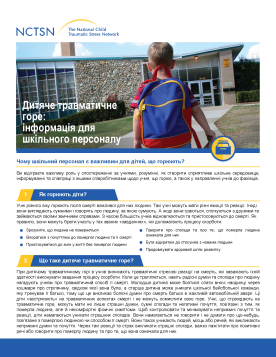
Offers information on why school personnel are important for grieving students.
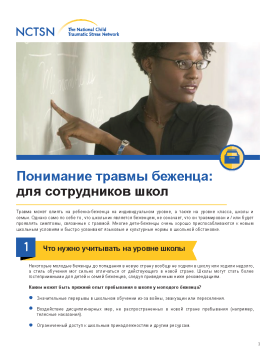
Outlines different considerations that school personnel need to take into account when working with refugee youth and their families. This fact sheet describes the school, classroom, individual, and family considerations that school staff should understand when working with this population.
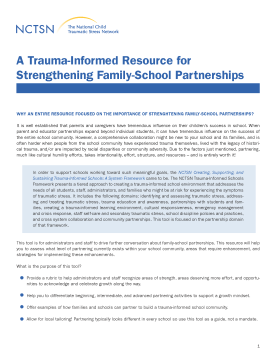
Helps schools assess what level of partnering currently exists within their school community, areas that require enhancement, and strategies for implementing these enhancements. This tool is for administrators and staff to drive further conversation about family-school partnerships.
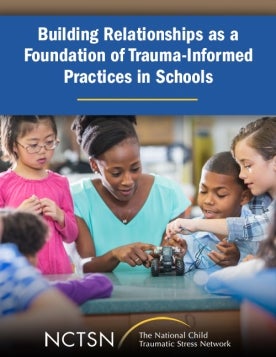
Highlights useful strategies for and classroom examples of relationship-building and its positive impact on trauma-informed practice change in schools.
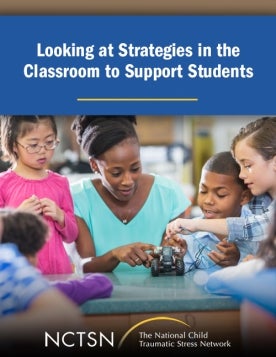
Shares principles and examples of creating meaningful changes in the classroom that form an environment where children feel safe and willing to take risks.

Highlights key components of the NCTSN Breakthrough Series Collaborative (BSC) for Supporting Trauma-Informed Schools to Keep Students in the Classroom.

Highlights how this initiative used the Breakthrough Series Collaborative Change Framework to increase psychological safety while also supporting trauma-informed changes at the classroom and school level.
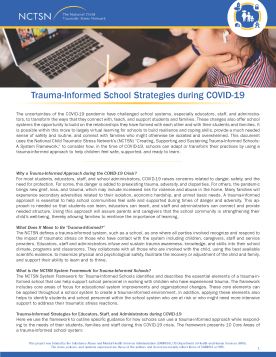
Provides trauma-informed school strategies in response to COVID-19.
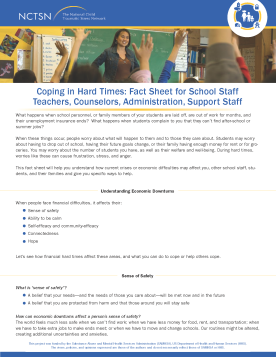
Discusses how challenging financial circumstances may affect you, other school staff, students, and their families and provides specific ways to help.
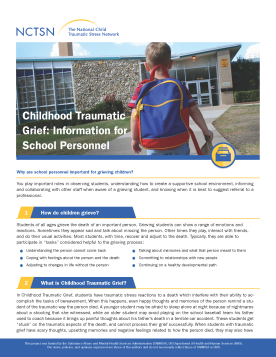
Offers information on why school personnel are important for grieving students. This fact sheet outlines how children grieve, what Childhood Traumatic Grief is, who develops Childhood Traumatic Grief, what traumatic stress reactions in Childhood Traumatic Grief can look like, the signs a student
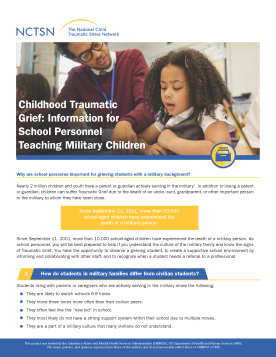
Offers information on why school personnel are important for grieving students with a military background. This fact sheet outlines how students in military families differ from civilian students, how students grieve, what Childhood Traumatic Grief is, who develops Childhood Traumatic Grief, what